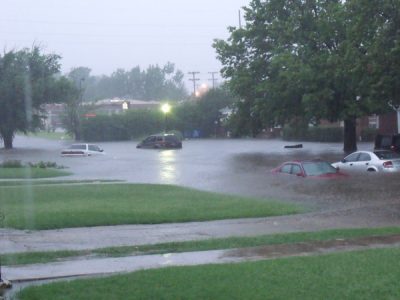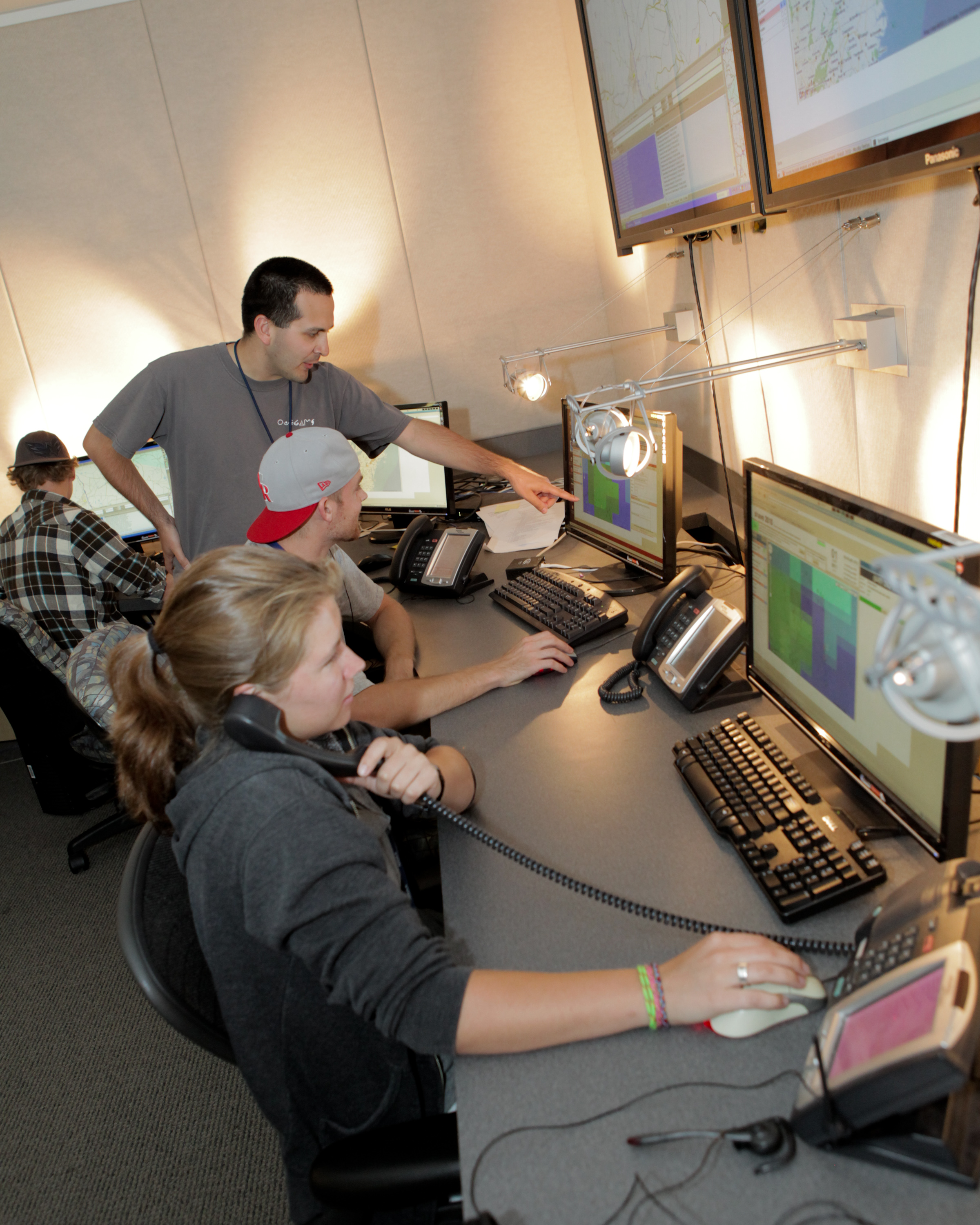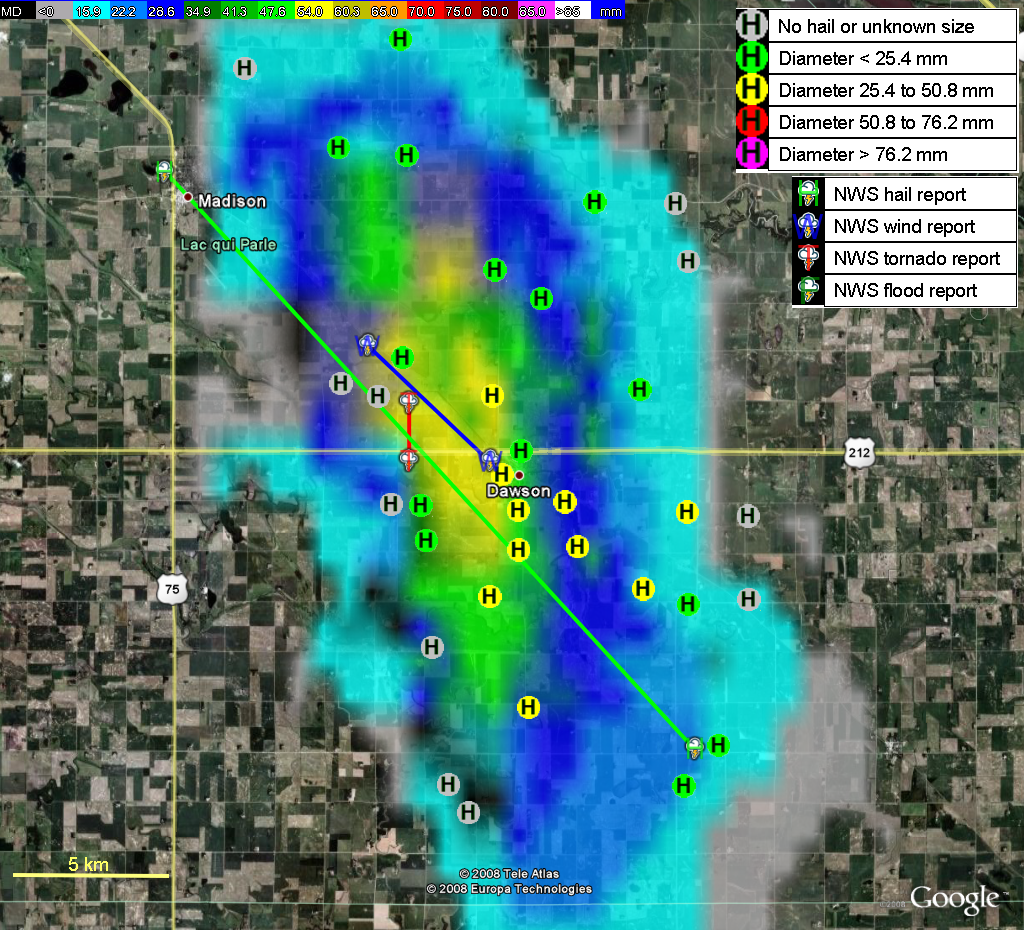
Flash floods are the number one hazardous weather-related killer in the US, yet they remain poorly observed. An NSSL project now collects data from the public on flash flooding, in addition to hail and win
d reports. This effort is creating a comprehensive database that will lead to the development of better tools to identify regions being impacted or about to be impacted by hazardous weather.
An article on the flash flood data collection success is currently in press in the Journal of Hydrology.
Since 2006, NSSL’s Severe Hazards Analysis and Verification Experiment (SHAVE) has conducted phone surveys of residents along the path of a target storm. People who answer the calls are asked about hail size and wind damage that occurred during the past 60 minutes. The addition of the collection of witness reports on flash floods was added in 2008. Data from the survey responses are used to evaluate flash flood forecasts from radar information and hydrologic model outputs.
The SHAVE flash flood reports supplement the operational NWS database because they are higher in density and contain additional information such as “no flooding” reports, “minor” impacts from flash flooding, floodwater depths, lateral extents of flooded streams, road closures, respondent estimated flood frequencies, evacuations, and rescues.
The combined datasets will lead to flash flood climatology maps, improved understanding of rainfall-runoff processes that cause flash floods, and the ability to evaluate and improve tools used to detect and predict flash floods.


